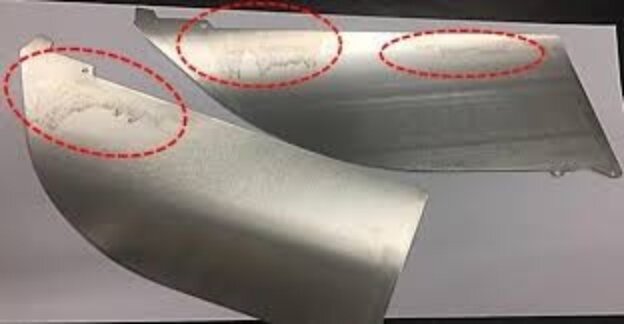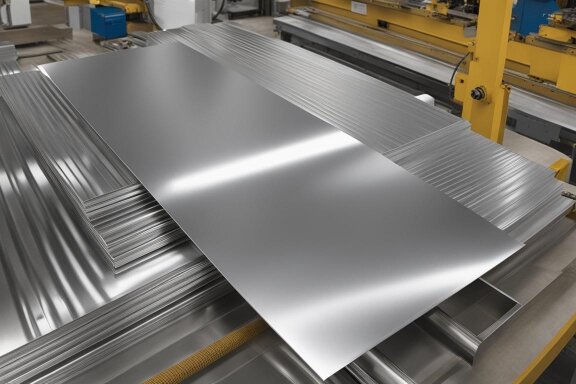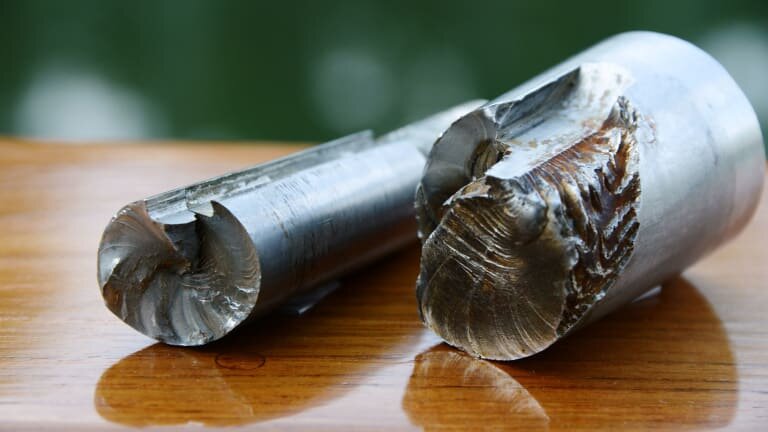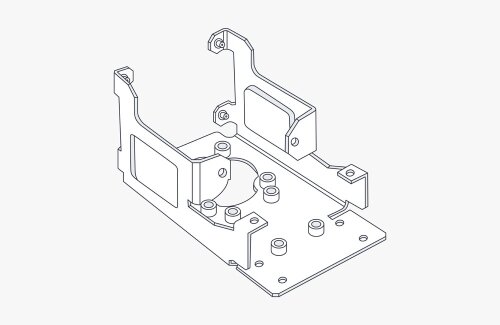Are you looking for the best methods to weld tubes and pipes? Whether working on a small project or a large-scale production, finding the proper welding technique can make all the difference. Each method has advantages and challenges, so choosing the one that best suits your needs is essential. In this post, I’ll walk you through the various ways to weld tube and pipe, helping you make an informed decision.
One of the most common methods is MIG welding. It’s ideal for beginners due to its simplicity and efficiency. Another popular technique is TIG welding, which produces high-quality welds, especially on thin materials. Arc welding is another option, offering versatility and the ability to work with thicker materials.
Keep reading to learn more about these welding techniques and how to apply them to your projects.
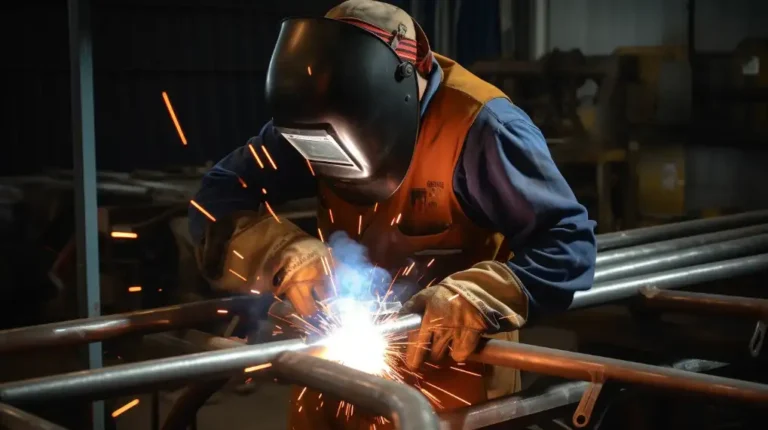
Fundamentals of Welding
What is Welding?
Welding is a fabrication process that joins materials, usually metals or thermoplastics, causing coalescence. This is typically done by melting the workpieces and adding a filler material to form a strong joint upon cooling. The process requires heat, pressure, or both to achieve the desired bond.
Difference Between Tube and Pipe Welding
Though “tube” and “pipe” are often used interchangeably, they have distinct differences, especially in welding. Tubes are measured by their outer diameter and wall thickness, and they are often used in structural applications where precision is crucial. On the other hand, pipes are measured by their inner diameter and are commonly used for transporting fluids and gases.
Tube welding requires more precision and often involves techniques like TIG welding for clean and robust joints. Pipe welding can involve a range of methods, including MIG and arc welding, depending on the pipe’s material and the application’s requirements.
Common Materials Used in Tube and Pipe Welding
Different materials are used in tube and pipe welding, each with unique properties and challenges. Some common materials include:
- Steel: Steel is widely used for its strength and durability. Both carbon steel and stainless steel are popular choices.
- Aluminum: Known for its lightweight and resistance to corrosion.
- Copper: Valued for its excellent conductivity and resistance to corrosion.
- Nickel Alloys: Used in high-temperature and high-corrosion environments, such as chemical plants and power generation.
Types of Welding Processes
Welding is a versatile process that joins materials, usually metals or thermoplastics. Depending on the application, material, and desired weld properties, various welding techniques are employed. Here are some of the most common types of welding processes:
Arc Welding
Arc welding uses an electric arc to generate heat and melt the base metals, fusing upon cooling. There are several types of arc welding:
- Shielded Metal Arc Welding (SMAW): Also known as stick welding, this process uses a consumable electrode coated in flux. The flux creates a gas shield to protect the weld from contaminants.
- Gas Metal Arc Welding (GMAW/MIG): This method uses a continuous wire electrode and shielding gas to protect the weld pool. It’s known for its speed and ease of use.
- Flux-Cored Arc Welding (FCAW): Similar to MIG welding, it uses a tubular wire filled with flux, which can be used with or without external shielding gas.
- Gas Tungsten Arc Welding (GTAW/TIG): Uses a non-consumable tungsten electrode to produce high-quality, precise welds, often on thin materials.
Resistance Welding
Resistance welding generates heat through the resistance of the workpieces to the electric current. Key types include:
- Spot Welding: Creates welds at specific points by pressing metal sheets together and applying an electric current.
- Seam Welding: Produces continuous welds along a seam using rotating wheel electrodes.
- Projection Welding: Uses projections or embossments on one workpiece to localize welding points when current is applied.
Energy Beam Welding
Energy beam welding uses highly concentrated beams of energy to join materials, offering deep penetration and minimal distortion:
- Laser Beam Welding (LBW): It uses a laser to generate the heat needed for welding and is suitable for precision applications.
- Electron Beam Welding (EBW): Uses a focused beam of high-velocity electrons, typically performed in a vacuum to prevent contamination.
Solid-State Welding
Solid-state welding involves joining materials without melting them. Instead, pressure and sometimes heat are used to create a bond:
- Friction Welding: Generates heat through mechanical friction between the workpieces.
- Ultrasonic Welding: High-frequency ultrasonic vibrations are used to create a solid-state weld.
- Diffusion Welding: This involves applying heat and pressure over a long period to bond the materials at the atomic level.
Other Welding Processes
There are several other specialized welding processes:
- Plasma Arc Welding (PAW): Similar to TIG welding, it uses a plasma torch to create a more concentrated arc.
- Submerged Arc Welding (SAW): Uses a continuous wire electrode and a granular flux that covers the weld pool, protecting it from contamination.
- Electroslag Welding (ESW): A vertical welding process to join thick materials by melting a metal wire and base metal using an electric current.
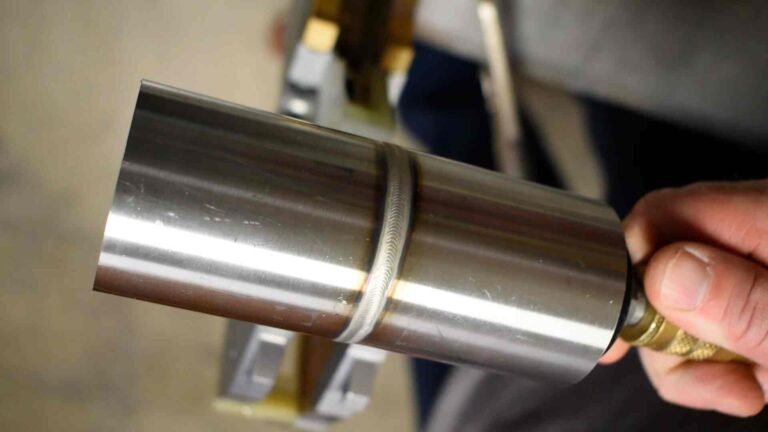
Welding Techniques for Tubes and Pipes
Techniques for Small-Diameter Tubes
Welding small-diameter tubes requires precision and control. TIG welding is often the preferred method for this task because it produces clean, high-quality welds. The non-consumable tungsten electrode used in TIG welding allows fine control over the weld pool, essential for small, intricate joints. Another effective technique is autogenous welding, which involves fusing the metal without filler material.
Techniques for Large-Diameter Tubes
Methods like MIG welding and submerged arc welding (SAW) are commonly used for large-diameter tubes. With its continuous wire feed, MIG welding offers high productivity and is well-suited for joining large metal sections. Submerged arc welding, on the other hand, provides deep penetration and high deposition rates, making it ideal for thick-walled, large-diameter tubes.
Techniques for Thin-Walled Tubes
Thin-walled tubes are susceptible to heat and can quickly become distorted or burn through during welding. TIG welding is again preferred for this application due to its precise control over the heat input. Another technique is laser beam welding offers a highly focused heat source that can produce narrow, deep welds without excessive heat affecting the surrounding material.
Techniques for Thick-Walled Tubes
When welding thick-walled tubes, achieving deep penetration and strong welds is crucial. Techniques such as arc welding, particularly shielded metal arc welding (SMAW) and flux-cored arc welding (FCAW), are commonly used. These methods can handle the higher heat input required for thick materials.
Preparation for Welding
Material Preparation
First, clean the surfaces to be welded to remove contaminants such as dirt, oil, rust, and paint. These impurities can cause defects in the weld, compromising its strength and integrity. Use a wire brush, grinder, or chemical cleaners to ensure clean surfaces.
Joint Design and Preparation
Choose the appropriate joint type based on the requirements of your project, such as butt joints, lap joints, or T-joints. Proper joint preparation involves accurately aligning and securing the workpieces to ensure a uniform weld. Depending on the joint type and material thickness, beveling the edges may be necessary to achieve better penetration and a stronger weld.
Selection of Filler Material
The filler material should match the base materials in composition and mechanical properties. Consider factors such as the type of metal, thickness, and the specific welding process used when choosing a filler material.
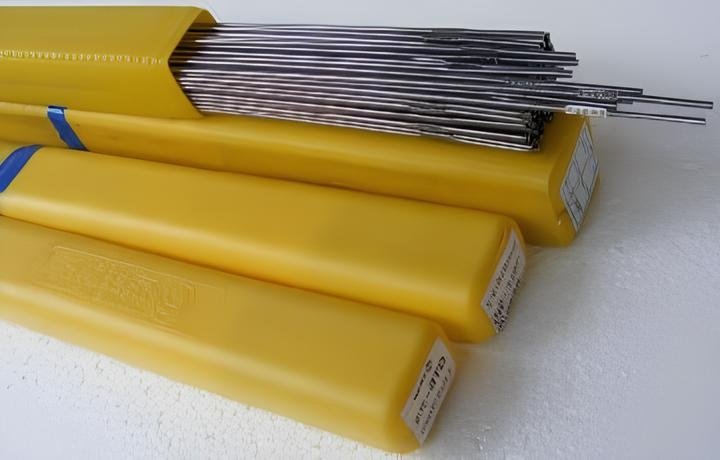
Welding Positions
Flat Position
The flat, downhand is the most common and easiest welding position. The workpiece is placed horizontally in this position, and the welder applies the weld from above. This position allows for better control of the weld pool, providing excellent penetration and weld quality.
Horizontal Position
In the horizontal position, the weld axis is horizontal, and the weld bead runs along a vertical surface. This position is more challenging than the flat position because gravity can cause the molten weld pool to sag. Welders must use specific techniques, such as adjusting the welding speed and angle, to prevent sagging and ensure a strong weld.
Vertical Position
The vertical position involves welding upward or downward along a vertical axis. Welding in the vertical position can be difficult due to gravity pulling the molten metal downward, increasing the risk of sagging or dripping.
Overhead Position
The overhead position is the most challenging welding position, where the weld is applied to the underside of the joint. Gravity works against the welder, causing the molten metal to drip downward. Welders must use precise control and techniques to manage the weld pool and avoid defects.
Common Welding Defects and Solutions
Welding defects can compromise a weld’s strength, appearance, and integrity. Understanding common defects and how to address them is essential for producing high-quality welds. Here are some typical welding defects and their solutions:
Porosity
Description: Porosity involves small gas pockets or voids trapped within the weld metal.
Causes:
- Contaminated base or filler material
- Improper shielding gas flow
- Excessive moisture
Solutions:
- Clean the base material thoroughly before welding.
- Ensure proper gas flow and use the correct shielding gas.
- Store filler materials in a dry environment to prevent moisture absorption.
Cracking
Description: Cracks can form in the weld metal or the heat-affected zone (HAZ).
Causes:
- High residual stress
- Rapid cooling
- Incorrect welding parameters
Solutions:
- Preheat the workpiece to reduce thermal stress.
- Use controlled cooling methods to avoid rapid cooling.
- Adjust welding parameters, such as voltage and current, to minimize stress.
Undercut
Description: An undercut is a groove melted into the base material near the weld toe that is not filled with weld metal.
Causes:
- Excessive welding speed
- Incorrect electrode angle
- High welding current
Solutions:
- Reduce welding speed to allow proper filling.
- Maintain the correct electrode angle to ensure even distribution of the weld metal.
- Lower the welding current to prevent excessive melting.
Lack of Fusion
Description: Lack of fusion occurs when the weld metal does not properly bond with the base metal or previous weld beads.
Causes:
- Insufficient heat input
- Incorrect electrode angle
- Contaminated base material
Solutions:
- Increase the heat input by adjusting the current or voltage.
- Maintain the correct electrode angle to ensure proper penetration.
- Clean the base material thoroughly before welding.
Incomplete Penetration
Description: Incomplete penetration occurs when the weld metal does not extend through the thickness of the joint.
Causes:
- Insufficient heat input
- Incorrect joint preparation
- Improper welding technique
Solutions:
- Increase the heat input to ensure complete penetration.
- Properly prepare the joint by beveling edges and ensuring correct fit-up.
- Use the appropriate welding technique and parameters for the joint type.
Spatter
Description: Spatter consists of tiny droplets of molten metal expelled from the weld pool.
Causes:
- High welding current
- Incorrect arc length
- Contaminated electrode
Solutions:
- Reduce the welding current to minimize spatter.
- Maintain the correct arc length to ensure a stable weld pool.
- Use clean, uncontaminated electrodes.
Slag Inclusion
Description: Slag inclusion occurs when non-metallic solid material is trapped in the weld metal.
Causes:
- Improper slag removal between passes
- Incorrect welding technique
- Contaminated base or filler material
Solutions:
- Clean slag thoroughly between weld passes.
- Use the correct welding technique to ensure complete fusion and slag removal.
- Ensure base and filler materials are clean and free of contaminants.
Advanced Welding Techniques
Automated and Robotic Welding
Automated and robotic welding involves using machines and robots to perform welding tasks. This technique enhances precision, consistency, and efficiency, making it ideal for high-volume production environments. Robots can be programmed to execute complex welding patterns with high repeatability, reducing human error and increasing productivity. Automated welding systems are widely used in the automotive, aerospace, and manufacturing industries.
Welding in Harsh Environments
Welding in harsh environments, such as extreme temperatures, high humidity, or corrosive conditions, presents unique challenges. Specialized techniques and equipment are necessary to ensure weld integrity and safety. Proper preparation, including thorough cleaning and using appropriate shielding gases, is essential to protect the weld from environmental contaminants.
Underwater Welding
Underwater welding, also known as wet welding, is a specialized technique used to repair and maintain submerged structures. There are two main underwater welding types: wet and dry welding. Wet welding is performed directly in the water using waterproof electrodes and equipment. Dry or hyperbaric welding is conducted in a dry, pressurized chamber around the weld site.
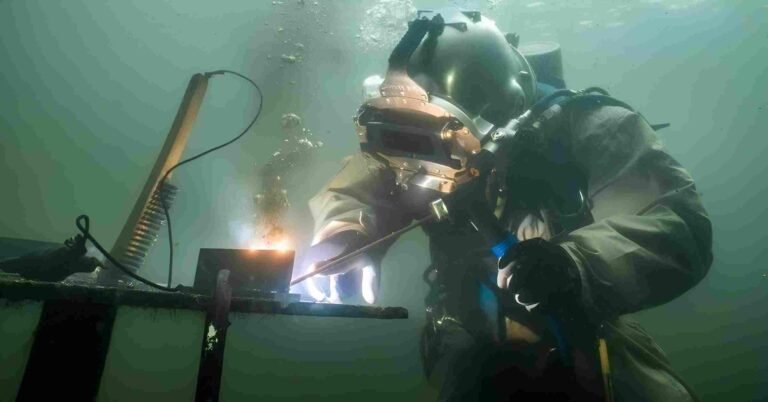
Applications of Tube and Pipe Welding
Automotive Industry
- Exhaust systems
- Roll cages
- Chassis components
- Fuel lines
Construction Industry
- Structural steel frameworks
- Water and gas pipelines
- HVAC systems
- Handrails and guardrails
Oil and Gas Industry
- Drilling rigs
- Pipeline transport systems
- Refinery equipment
- Offshore platforms
Aerospace Industry
- Aircraft frames
- Hydraulic systems
- Fuel and cooling lines
- Engine components
Conclusion
Welding techniques for tubes and pipes are essential across various industries, each requiring specific methods to achieve optimal results. Knowing the proper technique ensures a robust and reliable weld. Proper preparation, including material and joint preparation and the selection of suitable filler material, is crucial for high-quality welds. Also, mastering different welding positions and addressing common defects is crucial to achieving consistent and durable joints.
Do you need a reliable sheet metal parts manufacturer? Shengen is the place to go. We specialize in sheet metal laser cutting, bending, surface finish, and CNC Machining. Reach out to Shengen Today and seek help from professionals!
FAQs
How do you choose the correct welding method for a project?
Choosing the correct welding method depends on factors such as the material type, thickness, joint design, required weld quality, and the environment in which the welding will take place. It’s essential to consider these factors to ensure optimal results.
What are the main challenges in welding tubes and pipes?
The main challenges in welding tubes and pipes include:
- Ensuring proper alignment and fit-up.
- Controlling heat input to prevent warping or burn-through.
- Achieving full penetration for solid joints.
- Managing weld defects such as porosity and cracking.
How can one ensure the quality of a weld?
To ensure the quality of a weld, follow proper material and joint preparation procedures, select the appropriate welding technique and filler material, maintain correct welding parameters, and perform thorough inspections using methods like visual inspection, radiographic testing, and ultrasonic testing.
More Resources:
TIG welding for small diameter tubes and pipes – Source: Weldingweb
common welding defects – Source: Sentin
Different welding positions – Source: TWS
Hey, I'm Kevin Lee

For the past 10 years, I’ve been immersed in various forms of sheet metal fabrication, sharing cool insights here from my experiences across diverse workshops.
Get in touch

Kevin Lee
I have over ten years of professional experience in sheet metal fabrication, specializing in laser cutting, bending, welding, and surface treatment techniques. As the Technical Director at Shengen, I am committed to solving complex manufacturing challenges and driving innovation and quality in each project.

